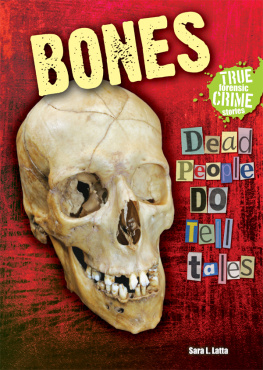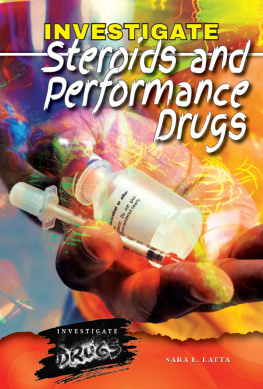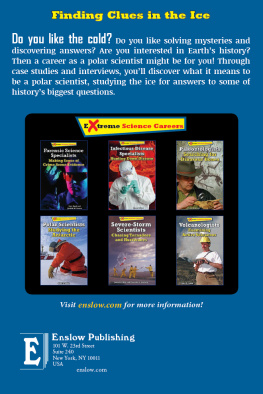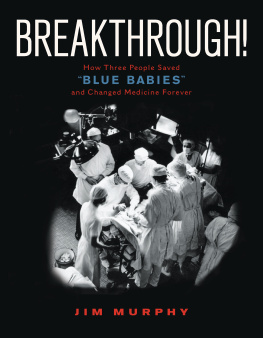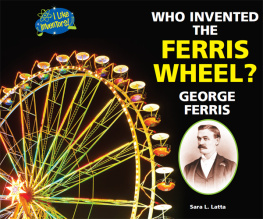COOL INVENTIONS!
VIVIEN THOMAS WORKED HARD AS A DOCTOR'S ASSISTANT TO INVENT A NEW HEART SURGERY TECHNNIQUE. HIS WORK HELPED SAVE THE LIVES OF BABIES WITH DEFECTIVE HEARTS. LEARN ABOUT THOMAS'S LIFE AND THE SURGERY HE INVENTED. AND MAKE YOUR OWN STETHOSCOPE, TOO!
"AFRICAN-AMERICAN MEDICAL TECHNICIAN VIVIEN THOMAS HELPED TO REVOLUTIONIZE HEART SURGERY, WHICH SAVED THE LIVES OF COUNTLESS ADULTS AND CHILDREN."
Duncan R. Jamieson, PhD, Series Consultant
Professor of History, Ashland University
Ashland, Ohio
"YOUNGER READERS WILL WANT TO READ MORE AFTER LEARNING ABOUT SOME OF OUR NATION'S GREAT INVENTORS. EASY-TO-READ AND INFORMATIVE, THIS SERIES MIGHT INSPIRE SOME FUTURE INVENTORS."
Allan A. De Fina, PhD, Series Literacy Consultant
Dean, College of Education
Professor of Literacy Education
New Jersey City University
Past President of the New Jersey Reading Association
About the Author
Author Sara L. Latta lives and writes about science and medicine from her home in Illinois. She has a BA in Microbiology, an MS in Immunology, and an MFA in Creative Writing.

WORDS TO KNOW

Image Credit: Shutterstock.com
bloodThe red liquid that flows through the body. It carries oxygen and other things that the organs need to work.

Image Credit: Shutterstock.com
inventTo think of something for the first time or find a new way of doing something.
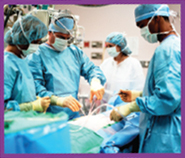
Image Credit: 2011 Photos.com, a division of Getty Images
operationCutting into a person to fix a medical problem.
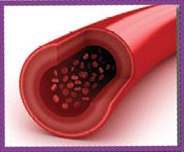
Image Credit: Shutterstock.com
vesselA tube that carries blood throughout the body.
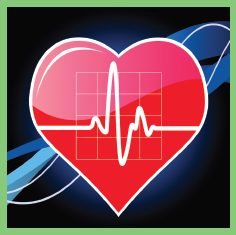
Image Credit: Shutterstock.com
Cookie was very sick. Her heart did not work well. Children with Cookies problem did not live very long. Vivien Thomas invented a way to fix the little girls heart. He saved the life of Cookie and other children like her.

Image Credit: Courtesy of The Alan Mason Chesney Medical Archives of The Johns Hopkins Medical Institutions

Image Credit: Courtesy of Thomas Family/Spark Media
Vivien Thomas lived from 1910 to 1985. He grew up in Nashville, Tennessee.
Thomas wanted to be a doctor. He lived in a time when black people were not treated fairly. But a black doctor could help other black people. It took money to learn how to become a doctor. Thomas, like many others in this hard time, did not have enough money.

Image Credit: National Archives and Records Administration
The 1930s were hard times. Here, people with no jobs wait in line for free food in New York City.

Image Credit: Courtesy of The Alan Mason Chesney Medical Archives of The Johns Hopkins Medical Institutions
Dr. Alfred Blalock
Thomas found a job helping a doctor. His name was Alfred Blalock. Dr. Blalock had a lab. He studied animals. The men in the lab wanted to know how their bodies worked. What they learned would help them treat sick people.

Image Credit: courtesy the Duke Medical Center Archives
Dr. Blalock taught Thomas how to operate on animals in his lab. Thomas was so good at his job that soon he was the boss in the lab.
Thomas helped Dr. Blalock solve a mystery. When a person got sick or hurt, sometimes the heart could not get enough blood to the rest of the body. Why? No one knew. Working side by side, the men figured it out.

Image Credit: Library of Congress, Prints and Photographs
Thomas and Dr. Blalocks discovery helped save the lives of many people who were hurt in wars.
Dr. Blalock got a new job in Maryland. He asked Thomas to come with him. Thomas and his family started a new life there. It was not easy at first. In Nashville we had a lawn and trees, Thomas said. But here, black people could not buy such homes.

Image Credit: Courtesy of Thomas Family/Spark Media
Some white people thought that it was strange for a black man to have such an important job. But they soon saw that he had a special talent in the lab.

Image Credit: Courtesy of The Alan Mason Chesney Medical Archives of The Johns Hopkins Medical Institutions
Dr. Helen Taussig wanted to help babies with heart problems.
One day, another heart doctor came to Thomas and Dr. Blalock. She told them about many babies born with a heart problem. Their blood vessels did not take enough blood back to the lungs. Could they help these babies?

Image Credit: Indiapicture/Alamy
When some babies were born, their skin looked a little blue. People called them blue babies.
Dr. Blalock was too busy to solve the problem. He asked Thomas to try. Thomas operated on the animals in the lab. There is a blood vessel that sends blood out into the body. Thomas found a way to connect it to the lungs, too. He made new tools to do the operation.

Image Credit: Courtesy of The Alan Mason Chesney Medical Archives of The Johns Hopkins Medical Institutions
Thomas (center) and Dr. Blalock had worked out the operation on their lab dogs in Tennessee. Although it was for a different problem, We knew we had the answer, Thomas said.



